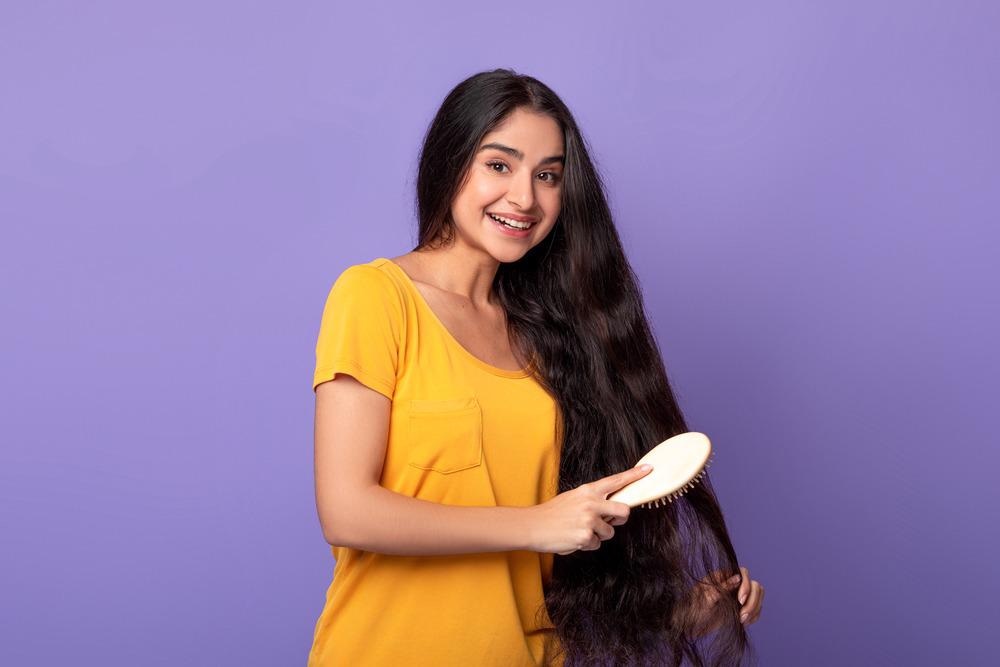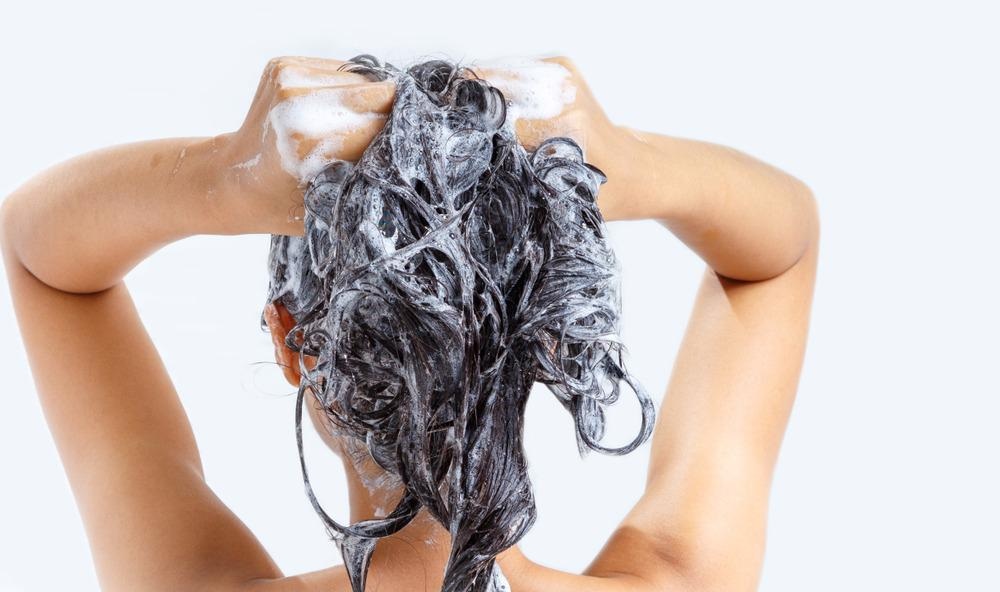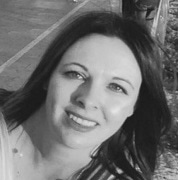What is healthy hair and what is the science behind it? Here we discuss the structure of the hair and its propensity to exhibit a healthy appearance or otherwise. Why is it that our locks can appear lackluster?

Healthy hair. Image Credit: Prostock-studio/Shutterstock.com
A better understanding of the natural properties of our hair has led us to the use of conditioning treatments to better manage and improve its appearance. In recent years we have witnessed an increasing demand for natural and sustainable hair-care products. Here we take a closer look at the use of plants in haircare.
What does healthy hair look like?
Healthy looking hair is generally thought of as smooth and shiny looking as opposed to dull, coarse and frizzy. The virtues of smoothness and shine relate to hair surface properties. Clean cut or tapered ends are further signifiers of health and relate to the hair cortex.
Among the reasons why a person might be left grappling with a less-than-healthy looking set of locks include excess styling and cosmetic treatments, such as the use of chemical dyes or bleaches. Here chemical damage may occur to contribute to a dull, frizzy, and lackluster appearance of the hair. Furthermore, age-related changes such as natural greying or androgenetic alopecia (hair loss in older men) can result in loss of shine and smoothness.
To keep our hair looking healthy involves the coordination of a complex set of elements; an interplay between medical and biological factors, scalp-care habits, hair care procedures and environmental factors. Cosmetics are used to alter the physical and mechanical properties of the hair, which in turn is dependent on internal structure and protein constitution. The hair surface when observed as “structured” at the molecular level has implications for the design of eco-friendly and sustainable ingredients and formulations for both shampoos and conditioners and these products have witnessed a rise in consumer demand in recent years.
What is the structure of the hair like?
The structure of hair consists of an outermost hydrophobic layer along with a cortex. Taken together these layers confer the coveted physical properties of luster (shine) and volume (body) necessary for the designation of hair “health.”
The hydrophobic lipid epicuticle layer comprises flattened overlapping cuticle cells. The normal cuticle is smooth in appearance and allows for the reflection of light. Meanwhile, the inner cortex is made up of closely packed spindle-shaped cells filled with keratin filaments. Permanent changes occur in the cortex when hair is exposed to treatments such as coloring or procedures such as curling or straightening.
Shampoo and conditioner go hand-in-hand
Shampoo works as a cleanser to remove excess oil, sebum, and dirt. However, when used alone it leaves wet hair tangled, difficult to manage and prone to fizziness upon drying. A poor combing technique can cause mechanical stress and lead the outermost covalently bound lipid layer to be removed, leaving the hair surface hydrophilic and ionized.
A solution to this problem is the application of conditioning treatments to the hair after shampooing or combining shampoo and conditioner into a single application ––a well-worn time-saving maneuver. The challenge in either case (shampoo + conditioner or a formulation in which the two are combined) is to maintain conditioning ingredients on the surface of the hair after the removal of the cleansing formulation. The most common conditioning ingredients consist of cationic surfactants, cationic polyelectrolytes, lipophilic conditioners (such as oils, natural waxes, fatty alcohols) and silicones.

Shampoo works as a cleanser to remove excess oil, sebum, and dirt. Image Credit: Mr.Cheangchai Noojuntuk/Shutterstock.com
The demand for natural and sustainable products
The cosmetic industry has sought to cater to demands for more natural and sustainable products. The big challenge here is to be able to replace traditional low-cost surfactants with new biosurfactants and for a similar price. Great strides have been made in this direction using green science principles and many new ingredients are nowadays eco-friendly.
In the search for more natural solutions, there has been the recent development of solid shampoos which harbor some novel and interesting ingredients. These are based mainly on clays, herbs, or flours, as an alternative to traditional washing bases, combined with the usual synthetic surfactants and other common ingredients.
There are several advantages of solid shampoos over traditional formulations, such as amenability to easy transportation and improved microbiological stability (the presence of water in the composition of traditional shampoos necessitates the use of additional preservatives). Here next we will turn to focus on the use of herbs.
The use of herbals for cleansing the hair has been known since time immemorial. In recent times there has been a resurgence in the use of herbals in conjunction with the increasing trend in favour of natural, raw materials. Herbal products are also favored because they offer the added advantages of being low cost, as well as proffering a low risk of side effects.
A whole plethora of plants has been discovered to be beneficial for our hair. The benefits are conferred through such sought-after components as vitamins, amino acids, sugars, glycosides, bioflavonoids, phytohormones, fruit acids and essential oils. The challenge lies in the selection of these natural ingredients, together with the advent of novel formulation techniques.
Although these new formulations comprise natural components from which we might connote a sense of protection, it remains imperative they are, in reality, safe and efficient for long-term use. Many available herbal shampoos still rely on synthetic ingredients, though the formulation of ‘pure’ shampoos using only natural ingredients is now known to compete with traditional shampoos in their much-desired characteristics of foaming, mild detergency, and solid content.
References
- Gubitosa, J. et al. 2019. Hair Care Cosmetics: From Traditional Shampoo to Solid Clay and Herbal Shampoo, A Review. Cosmetics. Doi: 10.3390/cosmetics6010013.
- Luengo, G. et al. 2020. Surface Science of Cosmetic Substrates, Cleansing Actives and Formulations. Advances in Colloid and Interface Science. Doi: 10.1016/j.cis.2021.102383.
- Sinclair, R. 2007. Healthy Hair: What Is it? Journal of Investigative Dermatology Symposium Proceedings. Doi: 10.1038/sj.jidsymp.5650046.
Further Reading
- All Hair Content
- Genetics of Hair Color
- Preventing Ingrown Hairs
Last Updated: Jun 8, 2022

Written by
Dr. Nicola Williams
I’m currently working as a post-doctoral fellow in the History of Science at the Leeds and Humanities Research Institute (LAHRI), at the University of Leeds. Broadly speaking my research area falls within the remit of the history of biology and history of technology in the twentieth century. More specifically I have specialist knowledge in the areas of electron microscopy and cellular and molecular biology, women in science and visual culture.
Source: Read Full Article
